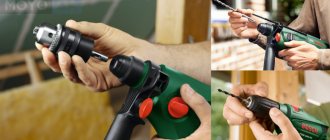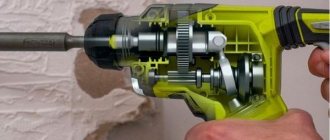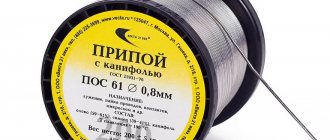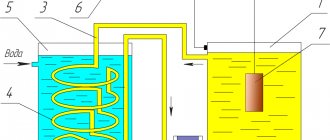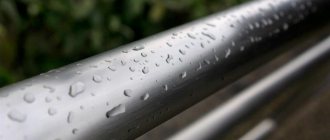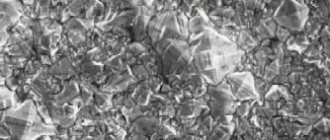After installing PVC windows, many people forget that it is necessary to carry out maintenance of fittings and seals.
For this purpose, special lubricants or their analogues are used, which prevent rapid wear of window elements.
Therefore, we will consider whether it is possible to lubricate windows, which parts of it need it, types of lubricants, and also how to carry out the treatment correctly.
Why do you need to lubricate the rubber bands (seal) on plastic windows?
We call an elastic seal around the perimeter of the sash and the light opening with an elastic band. It serves to tightly fit the sash to the frame and prevent cold air from entering the room. Every day the elastic bears a huge load from squeezing and unclenching. It’s clear that no matter how high-quality the seal is, sooner or later it will wear out. To reduce the wear of the seal, even at the production stage it is coated with protective compounds, which envelop the rubber with an invisible film. It is necessary to lubricate the seal in order to renew the protective layer and soften the rubber, and if necessary, it is recommended to replace the seal on plastic windows.
Causes
The causes of whistling may be the following:
- Air entry into drain. This sound will occur due to air movement through the frame. In order to eliminate it, it is necessary to manipulate the gasket, which should absorb sound;
- Correct installation of the window. The best way to check this is to use a level. Pay attention to its flexibility. To do this, open the sash slightly and evaluate how tightly the jumpers fit. If they can be easily shaken, then this indicator is unnecessary. To remove the whistling caused by this reason, the entire structure should be redone;
- The occurrence of a pressure difference inside and outside the room. To eliminate this problem, you should correct the condition of the seal inside;
- Some of the sealing material could remain between the frame and the slope, which could also cause an unpleasant sound. In this case, you should remove it very carefully;
- Carefully examine the position of the seal in each corner. Perhaps the sound is caused by a small gap between it;
- Sometimes chips left in the drainage hole may whistle;
- There was also a situation in which the whistle was caused not by a plastic window, but by a pipe that was located not far from the glass. The noise arose only with a very strong gust of air;
- Note the different valves. Whistling can occur when air flows through them at high speeds.
How to lubricate the rubber bands (seal) on plastic windows?
The main task of a seal lubricant is to protect it from moisture and cold. Many tools can cope with this task. The main thing to remember is that they should not contain alcohol, alkali or solvents. These substances disrupt the rubber structure and reduce the possible service life of the seal.
Professional products
Kits for comprehensive care of PVC windows. It is difficult to find a professional product for sealants; basically all compositions are aimed at caring for rubber products in general.
If they exist, they are sold as part of kits for the care of plastic windows, which also includes a means for washing PVC profiles and an aerosol for metal parts. Similar sets are available from KBE, Edel Weiss and ROBITEX. The pioneer in the production of comprehensive care was the German company Fenosol, which is what we will talk about, or more precisely about their product for caring for rubber seals FENOFLEX.
The manufacturer claims that FENOFLEX maintains the elasticity of rubber window parts, slows down their wear by 20-25%, and increases rubber resistance to critically low temperatures.
All substances in the composition are biodegradable, non-toxic and safe for humans. Due to the absence of any solvents and alcohol in the production, the composition does not in any way affect the texture of plastic and rubber.
In the set, Phenoflex is presented in a small tube of 50 ml. This amount of product will be enough for several years of use. The average price of a set is 500 rubles.
Universal silicone lubricants. Technical silicone is one of the best and most affordable ways to care for seals and rubber in general. It has a low viscosity, lays down in an even layer, protects the seal from the harmful effects of moisture, and slows down wear. Silicone is odorless and colorless, so it can be used for seals of any color. Thermal resistance of silicone is from - 50 oC to + 230 oC.
You can purchase silicone grease at a hardware or hardware store. It is usually sold in small soft tubes with a volume of 70-100 mm. The average price of lubricant is 100-120 rubles.
WD-40 is perhaps the most recognizable product of all that can be used to lubricate rubber bands on plastic windows. The original composition was developed to protect the skin of space rockets from corrosion, but soon a lot of possible applications were found for it in everyday life. The product is based on mineral oil, which covers the surface with a waterproofing film. The composition also contains various hydrocarbons that reduce the viscosity of the product. The product is sold in the form of an aerosol; the kit contains a small tube for point distribution of the product, making it very easy to distribute along the entire length of the seal.
Aerosol is sold in volumes from 100 to 420 ml. The price, depending on the amount of product, varies from 80 to 190 rubles.
Non-professional means
Glycerin is a colorless viscous liquid. It is particularly used in cosmetology and folk medicine; it is a by-product of saponification of fats. Chemists classify glycerin as an alcohol, but unlike other substances included in this group, it is not dangerous for PVC.
Glycerin softens the seal, makes it more elastic, and covers it with an invisible film.
The disadvantage of glycerin is that it easily dissolves in water, that is, it has a low level of waterproofing.
You can purchase the composition at the pharmacy. Its price is about 10 rubles. for 25 ml.
Vaseline covers the seal with a dense transparent layer. It perfectly softens the rubber, making it more pliable. Vaseline does not dissolve in water, due to which it perfectly protects the seal from the influence of moisture in the air and precipitation. Its frost resistance is very low - only up to -25°C, melting point - +27°C. Due to the low resistance of such a lubricant to temperature changes, the protective layer does not last long. Of course, Vaseline is not an ideal product, but it is better than lubricating the rubber seals in plastic windows with alcohol- or solvent-based products.
Vaseline is sold in pharmacies and cosmetic stores. The average price fluctuates around 25 rubles. for 75 ml.
How to lubricate the rubber band (seal) of a plastic window?
The seal needs to be lubricated at least twice a year: before the winter and summer seasons. First of all, the seal must be wiped with a soft cloth or sponge soaked in soapy water, then wiped dry.
The lubricant is first applied between the seal petals (if any), after which the product is applied to the entire outer surface of the rubber band. The most convenient way is to use an aerosol (WD-40). You can simply spray it along the entire length of the seals.
If you prefer viscous creamy products (silicone grease, Vaseline), you need to stock up on a soft brush to distribute the product evenly or do it with your hands.
If you use liquid products (glycerin), you cannot do without a cotton swab.
You will spend 5-10 minutes lubricating the entire seal, after which the sash can be closed immediately.
How to lubricate plastic windows: the best care products and rules
Every day, dust and street dirt adhere to the standard lubricant of the window mechanism system. If you do not pay due attention to this factor, then over time it will become increasingly difficult to close such a window. Of course, problems of this kind do not manifest themselves immediately: for this reason, many homeowners do not even realize that the fittings of plastic windows need the same care as the car parked under the window. From this material you will learn: how to lubricate plastic windows, why to perform this procedure and how.
Let us consider in detail the last two points.
In a previously published article entitled “”, all the components of this light-transmitting solution were described in detail. Let us briefly recall that a double-glazed window includes several glasses that form chambers and are separated by a spacer frame. The space in the chambers of a double-glazed window is filled either with inert gas (a more expensive version of windows) or with dry air (the most popular due to the optimal price/quality ratio). At the joints, to ensure the tightness of the structure, the chambers are sealed with a special substance.
Due to the impact of environmental manifestations on the glass unit, such as a sharp jump in atmospheric pressure or a change in temperature values, mechanical stresses are likely to occur on the glass, which is one of the reasons why the glass unit burst.
Why do you need to lubricate PVC windows?
It is important to know that timely lubrication of PVC windows will help to avoid quite serious problems with closing the window, which over time for many owners begins to “click” or grind. If you ignore the situation for a long time, this approach can result in expensive repairs.
After a certain time, the factory lubricant becomes obsolete. If you don't lubricate the window mechanism. then the strong friction of the metal parts on both sides will intensively wear down, the counter strips will wear out, and in addition to street dust, metal dust will also accumulate in the frame from such a process. The window begins to close poorly, and the handle moves noticeably harder. A poorly closed window causes a strong draft and serious heat loss.
Often previously popular series of fittings, which are used today in most homes, are outdated models, and therefore discontinued. This means that if these problems occur, you may not find “original” parts for the window. You will have to replace the entire mechanism, including carrying out unwanted repairs, which will definitely cost a pretty penny. Timely lubrication will help avoid all this.
The sash stopped closing: problem solving
Adjustment of the pressure must be made when the window has difficulty moving from the open position to the closed position. Often the reason is the lock device, which does not allow the handle to be turned. The exact sequence of actions depends on the specific manufacturer. Some examples are equipped with a thin plate equipped with a spring on the inside, which must be pressed and the handle turned to close the window. Other copies are equipped with a tongue under the handle - when you press on it, the lock of the adjusted mechanism is removed.
If the sash stops closing, you need to unlock the lock
In a situation where the window still does not want to close, minor repairs will be required. It is necessary to open the sash, find the element of the mechanism that serves as a hook for the tongue, unscrew and install a thin plate on the inside. The solution helps to shift the mechanism closer to the response element. As a result, the contact area will increase, allowing you to easily close the window.
Which lubricant to choose
The first thing you need to figure out is what composition is best for lubricant production. Any technical oil intended for machinery is suitable.
You can lubricate metal parts with ordinary machine oil, which is used to lubricate the elements of a sewing machine, if you have one in the house.
You can use a silicone-based lubricant. But formulations are also sold that are specifically designed for this procedure. They are sold either in plastic bottles or metal cans. The included nozzles are very convenient for lubrication.
silicone window grease
Home craftsmen most prefer the lubricant composition “WD-40”. All moving mechanisms that form the system are processed:
- fastenings;
- constipation
WD-40 is often used by DIYers to lubricate windows.
Criteria for choosing window lubricants
You need to take care of window structures with high-quality and proven products. Poor lubricant quality will reduce the service life of the mechanisms. When purchasing, be guided by the region of residence, because some products tend to “tan” at low temperatures.
Aerosol for lubricating plastic windows
Consult with the store salesperson which lubricant is suitable for your plastic window model. Choose aerosol products. This is the most convenient type of lubricant with economical consumption. Using spraying you can reach the most inaccessible places in the mechanism. You don't have to buy expensive products. They often contain components found in inexpensive lubricants, and their operating principle is the same.
What not to use
There are products that are strictly prohibited from using to lubricate windows.
- Vegetable oil. When it dries, it creates a dense layer that mixes with dust and turns into dirt that is difficult to remove.
- Products that contain acids and alkalis. They quickly destroy the protective coating and reduce the performance of the entire structure.
- Kerosene based products.
- Most types of automobile oils and products that are used to lubricate guns.
The use of these materials is strictly prohibited. They not only have a negative impact, but also provoke premature breakdowns.
If elements need urgent lubrication, it is better to pay attention to quality substances. This will be reflected in successful functionality in the future.
How to lubricate the mechanism of plastic windows
The best choice for lubricating window mechanisms would be the following:
- Silicone based products made specifically for window mechanisms. When applied to a metal surface, a thin, resistant film is formed. The lubricant is available in tubes or sprays. Both options will do;
- universal lubricant, which contains the same silicone. It is identical to the special product, but can be used not only on windows. The consumption of the product is minimal, so one tube will last for a long time;
- lubricating oil for sewing machines or bicycles. The product is similar to machine oil, but has better cleaning properties. It is easy to use and stays on the surface for a long time;
- mineral or synthetic lubricants. The main thing is to choose products that do not contain acids, aggressive reagents and abrasives.
It is not recommended to use any vegetable fats, petroleum jelly, or shoe polish for lubrication. This is due to the fact that vegetable oils leave a film on the mechanisms that takes a very long time to dry, about two weeks. During this time, a large amount of dust accumulates on it, which complicates the operation of the fittings, accelerating its wear.
TYPES of products for plastic windows
What should not be used to lubricate plastic window fittings? Products containing acids and chemicals destroy the metal surface, “eat” the anti-corrosion layer and oxidize parts. Gun and car oils are also not suitable. The former are expensive and do not provide protective functions for windows. The latter have a low degree of purification.
How to lubricate rubber bands on plastic windows
Seals also need maintenance. You can buy special lubricants, or you can use improvised means:
- silicone-based lubricants;
- silicone sponges;
- pharmaceutical glycerin, but only in its pure form, without cosmetic additives.
Vaseline and baby powder should not be used. Also, do not choose products containing solvent, alcohol and alkali. They will lead to destruction of the rubber structure.
There is a controversial opinion regarding the use of WD-40. Some argue that using an aerosol will create a protective waterproofing film on the surface. Others say that at low temperatures the product can thicken and interfere with the operation of window mechanisms. If this is the only product on hand, it can be used to lubricate the seals.
How to lubricate fittings and seals
So, what should you use to lubricate the PVC window mechanism? Any machine oil will do for this purpose. the purpose of which is to lubricate production mechanisms. There is no big difference in whether it is synthetic or, for example, mineral. However, remember that the second type is characterized by strong “thickening” at low temperatures.
Modern silicone oil is often used. Moreover, it is best to use a product of a foreign brand, since it has the thickest mass and lasts longer. One of the best domestic products that can compete with foreign oils is considered to be a grease type lubricant, for example, CIATIM.
What substances are not suitable for lubrication? Let's list the main points:
Set for lubricating plastic windows
- Under no circumstances use vegetable oils for these purposes: when they dry instantly, they begin to work like sandpaper! In less than a year, the entire roller mechanism with such lubricant will wear out.
- You should not use butter, as well as margarine, Vaseline, shoe gel and other household substances - all of them will similarly contribute to the rapid “disease” of your windows.
In the case of seals: professionals, as a rule, recommend using silicone oil, which is not capable of damaging the rubber. You can also purchase a special lubricant for plastic window seals and treat them simultaneously with the fittings.
Complete care for PVC windows
Always lubricate window fittings thoroughly and extremely carefully. But to do it correctly, you need to not only know how to lubricate plastic windows, but also where. To approach this issue wisely, you should listen to professional recommendations and use the following step-by-step instructions.
- Cleaning window fittings . Use a hard brush for a complete cleaning procedure. Open the window and thoroughly wipe all hidden parts with a damp cloth. Pay special attention to the places where the movable sashes are connected to the static frames. It is in these parts that outdated lubricant resides, and the main dirt accumulates, which must be eliminated.
- Lubrication of fittings and mechanisms . After cleaning the window hardware, start spraying the roller mechanism with silicone lubricant. It is recommended to apply no more than two drops of oil to each part. During the lubrication process, constantly turn the control knob, as if opening and closing a window: this way you will evenly distribute the lubricant over the entire surface of the rubbing parts.
- Inspect, clean and lubricate seals . By lubricating the seals, you extend the life of PVC windows. Their shrinkage is equivalent to 80% of breakdowns during repair work. If you need to replace the seal, you must first carefully remove the old one using a flat screwdriver and insert a new part in its place, having previously lubricated the seating area with silicone oil. After installation, it is necessary to generously lubricate the seal itself.
- Window adjustment . The windows are equipped with hinges that are adjusted using threads. If the window shrinks, adjust its position.
This diagram will help you figure out how to properly lubricate plastic windows.
It is recommended to lubricate the fittings in early spring or late autumn. The procedure for lubricating PVC windows can be carried out once a year in the absence of stable contamination. If the fittings become dirty quite quickly, it is necessary to clean and lubricate the mechanism and window seals at least 2 times a year. A responsible approach to this issue will be the main factor in the long and stable life of your windows.
Do-it-yourself adjustment of PVC windows is described in our instruction article. The process is quite simple, so if you have the necessary information, you can do everything yourself.
Tags
AUBIDouble-sided handle on the balcony doorhacking of plastic windowssoldered sealant sealant for plastic windowschild lock blowing from the windowjammed balcony doorjammed window handlereplacement of window fittingschild protectionwinter modehow to choose plastic windowswhen to install windowscondensation on windowscoextruded sealantmosquito netssetting up plastic windowsbalcony door does not closewindow slippage windows storiesplastic windows plastic windows are whistling, plastic windows are crying, the window does not close well, the plastic balcony door is sagging, blowing out plastic windows, adjustment plastic windowsadjusting fittingsknobs with a keybalcony door creakslubricating plastic windowswindows leakingsealing rubberinstallation of pvc windowswindow insulationcaring for the sealsound insulation of pvc windows
Recommended lubricants for window elements
The correct choice of lubricant depends on the materials from which the window parts are made and their operating conditions. Therefore, different lubricants are used to process different structural elements.
Locking mechanisms
To lubricate metal parts, it is recommended to use:
- special lubricants for plastic windows, made on a silicone basis and packaged in aerosol cans or tubes;
- universal silicone compounds that can be purchased at auto parts stores;
- machine oil for sewing machines;
- all types of semi-synthetic and synthetic oils, neutral to rubber and plastics.
It is possible, but not recommended, to use oils for diesel engines and spindles as excessively fluid materials. The well-known WD-40 lubricant thickens at low temperatures and therefore is also not used.
It is strictly forbidden to use:
- vegetable and animal fats;
- petrolatum;
- shoe care products;
- margarine and butter.
All these substances contribute to increased dust deposition, can thicken in fresh air and lose their lubricating properties at low temperatures.
Lubricant for hardware
The answer to the question of how to lubricate plastic window fittings is simple. For this, the same materials are used as for locking mechanisms (with the exception of sewing machine oil). But lubrication with spindle oil is allowed.
Rubber seals
Completely different materials are used to lubricate rubber seals. Answering the question of how to lubricate rubber seals on plastic windows, experts talk about the possible use of the following professional and household products:
- technical silicone is the best and inexpensive product, colorless and odorless, retaining its properties in the range from -40°C to +150°C;
- special lubricant for window seals produced by the German company Fenosol;
- lubricants for rubber materials recommended and produced by window manufacturers;
- Vaseline, provided that it is used at an outside temperature not lower than -25°C and not higher than +27°C.
Ordinary glycerin softens rubber well, but its ability to dissolve in water limits its scope of application for external elements. Well, or it does, but at the expense of increasing the number of periodic maintenance.
The use of WD-40 is not recommended, since the manufacturer has classified its chemical composition and the effect on rubber products is unknown. However, there is information that seals made of artificial rubber, with repeated exposure to WD-40, harden, become brittle and collapse over time.
Lubricants overview
Lubricants may differ from each other in their area of application, as well as in the presence of certain odors. Temperature ranges will vary depending on the product.
There is a large selection of silicone lubricants for rubber seals on the market; let’s look at the most popular substances.
WD-40
One of the most famous products is available in spray form. Initially, this type of lubricant was intended to remove corrosion on metal parts of a car.
During use, other useful characteristics were discovered. These include:
- discerning ability;
- creating a protective layer to prevent the negative effects of moisture.
In fact, WD-40 allows you to increase the service life of rubber elements. If the substance comes into contact with polystyrene or polycarbonate, it destroys these compounds. When using WD-40 lubricant, you must be careful not to let it get on your mucous membranes.
Glycerol
Belongs to the category of viscous and colorless substances.
Characterized by:
- low solidification temperature;
- high hygroscopic characteristics.
Therefore, glycerin can be used to protect rubberized seals. As a result of processing, the lubricant softens the rubber and makes it elastic, which helps prevent cracking. The disadvantages of the product include the fragility of its action. For high-quality surface treatment, the car owner will have to periodically use lubricant.
Very Lube
Used for processing plastic and rubberized parts and elements. The use of lubricant allows you to restore the color of components and also protect them from rapid wear. The main feature of the product is its cleaning characteristics. The lubricant allows you to penetrate deeply into scratches and microcracks, also removing dirt. By restoring the original color, the substance improves the appearance of rubber products. The lubricant prevents cracking of parts and prevents them from freezing during the cold season.
The main disadvantages include the fragility of the protective coating. The car enthusiast will often need to use lubricant.
Nanoprotech
The lubricant has gained great popularity among consumers due to its characteristics:
- moisture-proof;
- anti-corrosion;
- penetrating;
- lubricating
The use of substances helps prevent freezing of seals on moving components and mechanisms. The product performs well when used in the Far North, since its freezing point is -80 degrees. The substance completely pushes moisture out of microcracks on the surface being treated.
Its use allows rubber seals to maintain their elasticity. Plastic, metal parts, paintwork are not destroyed as a result of using Nanoprotech. The use of a lubricant helps prevent the formation of an emulsion. The product does not contain rubber or Teflon.
How and in what places to lubricate
All movable metal fittings are processed; to do this, you must do the following:
- Open the valves, conduct a visual inspection, clean the parts that are supposed to be lubricated from dirt and accumulations of old lubricant. Clean with a clean rag; in hard-to-reach places you can use a small brush (a toothbrush will do).
- The spray is sprayed in small portions from a distance of 2-3 cm (for convenience, the kit usually includes a special tube). Lubricant is applied pointwise to the interaction points of moving mechanisms (hinge hinges, shut-off valve elements, etc.).
- Lubricant without a sprayer is usually applied from the container in which it was purchased (tube, oil can). If the product is supplied in containers that are not suitable for drip application, it is convenient to use a regular medical syringe. To lubricate one element, 2-3 drops of oil are enough.
Diagram of lubrication points for plastic window fittings
If lubricant gets on the adjacent surface, which often happens when sprayed, the excess must be removed with a clean, dry cloth.
For those who don’t understand where exactly to fill the oil, watch our video instructions:
Lubrication of locking mechanisms and fittings
When preparing a window for lubricating metal elements, it is not recommended to use active detergents and solvents. It is best to carry out work in calm, warm weather, as the wind can bring dust, soot and other pollutants.
It is most convenient to apply lubricant using a syringe. To lubricate one point, it is enough to take 2-3 drops of material from a tube or bottle. The use of aerosol cans leads to obvious excess consumption of lubricant and its spillage into adjacent areas. All nodes are processed at one time.
After applying the lubricant, the window sashes must be opened and closed several times, moving them in each working plane. As a result, the lubricant will be evenly distributed over the entire surface of metal parts and assemblies.
Rubber seals
To clean the surface of the rubber seals, you can use warm soapy water, a sponge or a soft cloth. After washing, the rubber should be wiped dry and air dried. For double-leaf rubber profiles, the inner surface is initially lubricated and only after that the outer surface is lubricated.
To apply loose lubricants, use a cotton or gauze swab; aerosol products are simply sprayed on; thick substances can be smeared with a finger or a brush.
Requirements for proper care of rubber seals include treatment at least twice a year.
Lubrication frequency
Periodic maintenance of plastic windows with the application of lubricant must be performed at least once a year. This is best done when washing glass in the spring after winter operating conditions. In addition, when determining the frequency of lubrication, it is necessary to take into account:
- the presence of roads, construction sites, industrial enterprises and other dust-generating objects near the house;
- general air dust content depending on natural and climatic conditions;
- frequency and duration of opening windows during the warm season.
If the influence of the listed factors is great, then lubrication of plastic windows must be carried out more often. For example, in spring and autumn. It is recommended to treat rubber seals every time you wash windows, since the soap solution used washes off the previous coating.
Main lubrication points.
The process of lubrication of window mechanisms
First stage. The window sash opens. All sides are carefully examined.
Second phase. Dirt is removed from the fittings and a soft cloth is used. You can clean more difficult to reach areas with a brush with an extended handle or a sponge attached to a thin stick. The new composition must be applied to a clean surface.
Third stage. After cleaning, lubricate generously:
- latches;
- bolts;
- mounting brackets;
- handle mechanism;
- other moving elements intended for opening/closing the sash.
It is more preferable to use spraying compounds, because then the lubricant penetrates even the most inaccessible places of moving mechanisms.
The set of lubricant cylinders usually includes removable movable “spouts”. With their help, it is possible to apply a lubricant composition even to those parts of the mechanisms that are hidden by the frame body.
Plastic window lubrication
If you use lubricant in bottles, you will need from one to three drops of lubricant for each part. All elements of window sashes and frames are lubricated at the same time.
Lubricating fittings using a plastic bottle
Must be taken into account! You should not experiment and use butter, vegetable oil, Vaseline or cosmetic gels. The first days after such treatment, the mechanisms will work properly, but this will not last long. Soon the mechanical systems will begin to seize. In addition, when you finally have to use the correct compounds, the previously applied substance will be difficult to remove.
Fourth stage. Attention should also be paid to rubber seals. These elements are treated with compounds specifically designed for this purpose. Then tires:
- does not dry out;
- does not lose elasticity;
- does not crack.
Otherwise, the seal between the sash and the frame seems to be broken. And due to a violation of the sealing, cold, dust, and street noise will begin to penetrate into the room.
Timely preventive maintenance of all window elements and fitting mechanisms will help get rid of problems: the window system will serve without failures for many years, and there will be no need to replace individual parts.
Timely lubrication prevents the formation of drafts. Prevention also prevents heat from escaping from the room in winter.
Lubricating rubber seals
As with metal mechanisms, the procedure begins with cleaning the surface to be treated. The window sashes are opened, dust and other contaminants are removed with a dry cloth or brush, after which the rubber elements are washed with soapy water outside and inside. Do not use aggressive chemicals or abrasive sponges.
When the washed rubber is completely dry, lubricant can be applied. Liquid products without a sprayer are applied with a cloth or cotton swab, rubbing evenly over the entire surface of the seal. Spray is less preferable for such a task, since its consumption will be much greater.
Consequences of no treatment
Important! If you do not lubricate the fittings, then over time it will become clogged with dust, the oil will thicken, and the surface of the metal will begin to wear off, forming metal shavings.
This will cause unpleasant squeaks or rattles, the window will be more difficult to open/close, and the locking mechanism may also jam. In some cases, the sash may become skewed or not fit tightly, which will result in poor thermal efficiency and sound insulation.
Seals that are not lubricated will gradually wear out or become deformed. Under the influence of the external environment and pressure, they will begin to lose elasticity, which is why they may crack or become hard. This will lead to the window no longer closing tightly (or closing at all), as well as the formation of drafts and cold bridges, which will reduce thermal efficiency and sound insulation.
Checking and adjusting plastic window fittings
Fittings include all metal and plastic elements that are equipped with plastic windows, both movable and permanently installed. If they break or become loose, the window system will not be able to perform the functions assigned to it: hermetically closing, freely opening the sashes and installing them in different positions.
Elements of fittings for plastic windows
For example, the handle mechanism is designed in such a way that it allows you to open the window wide or only slightly open it at the top for ventilation.
Arrangement of fittings elements in the window structure
Some elements of the fittings ensure smooth operation, thereby eliminating the breakdown of mechanisms. Other details are designed to regulate the uniformity and force of pressing the window sash against the frame, ensuring not only heat retention, but also sound insulation.
Find out why plastic windows fog up inside, and also consider the causes and solutions from our new article.
In order for all these elements to work effectively, window maintenance, in addition to lubricating them, also includes periodic adjustment of some parts. However, it should be noted that adjustment is carried out only if clearly necessary, and only in cases where the window does not close completely or the handle does not turn well. Both processes - lubrication and adjustment - are usually carried out in combination. To do this, you will need some tools, which, by the way, may not be in the owner’s “arsenal”, but they can be purchased at hardware stores.
- For example, you cannot do without a 4 mm hexagon of a curved shape.
A hex key can be easily purchased at a furniture hardware store.
Such keys are used when assembling furniture, so they are probably in furniture fittings departments. In most window systems, it is this hexagon that becomes the main tool for adjusting mechanisms.
Most often, this is the key that becomes the main adjustment tool.
- Certain difficulties may arise with a screwdriver. It’s good if the fasteners on the window are designed for a regular figured screwdriver (usually a “three”). But there are window systems that use Torx stars.
- Most likely, every home has pliers.
Adjustment of individual mechanisms of plastic windows is carried out to eliminate problems that have arisen, which can include:
- difficulty moving the sash when opening or closing;
- sagging of window or door sashes;
- the appearance of cracks, that is, a violation of the tightness when the valves are closed;
- if it is necessary to replace individual elements due to their failure;
- when transferring the window system from the “summer” mode to the state for winter operation.
When starting adjustment, you need to know exactly how it is carried out and which elements are subject to it.
Basic techniques for adjusting plastic windows
The process of regulating the window mechanism is carried out according to basic points, which include:
- Accurate horizontal installation of the window sash;
Adjusting the sash horizontally
- Similar actions vertically;
Adjusting the sash vertically
- Adjustment of the required tight pressure of the sash;
Adjusting the window sash pressure density
- lower angle of sash opening in ventilation mode.
By rotating this screw, you can press or press the lower corner of the window sash.
When adjusting the window elements, use a wrench to turn the adjusting screw clockwise or in the opposite direction. Depending on the direction in which it turns, the sash will move.
When changing the position of the sash, after each turn or half-turn of the screw, it is necessary to check the operation of the window system. If necessary, the screw is turned back to a certain angle. It is not recommended to turn it over a long distance at once - it is best to do this gradually, shifting the position of the sash by 0.5 - 1 mm.
In addition to the basic points, the fasteners are adjusted, which are installed using bolts with a head with slots for a shaped screwdriver. If necessary, you can loosen or tighten the fastening of the adjusting elements with the necessary change in their position.
- adjust the trunnions;
Example of trunnion adjustment
- bolts in the scissor system;
Checking the tightening level of the screws in the scissor system
- fastenings in the upper canopy;
Before making adjustments, it is necessary to check whether the fixing screws of the upper and lower canopy are loose
- fastenings in the lower canopy;
- clamping mechanism;
- balcony magnetic latch;
The handle can also become loose - the screws need to be tightened
- window opening handle mechanism.
Video: how to care for plastic windows
The mechanical part in plastic windows from different companies is designed, as a rule, according to the same principle, so the adjustment instructions should be suitable for any of them. Every manufacturing company that respects itself and its customers gives detailed descriptions of its products and recommendations for caring for them. If you wish, you can always turn to primary sources, knowing which company’s windows were installed in the apartment.
Having all the necessary tools and lubricants, approaching the work without haste and understanding the design of the mechanisms, it is quite possible to carry out this work yourself.
What happens if you don't lubricate?
Any lubricant dries out over time, which leads to mechanical overload of the metal moving elements of the fittings. The additional load itself significantly reduces the service life of the mechanisms, not to mention the fact that non-lubricated elements are subjected to this load. Various kinds of particles accumulate in the grooves of the frame and sashes, including sand and metal dust (appears during prolonged operation of the fittings). These materials are abrasives and do not have the best effect on the performance of the mechanisms and the window as a whole.
The service life of rubber seals is about seven years. In hot, dry climates, rubber and polymer materials lose the necessary elasticity even earlier. Without treatment, the rubber quickly becomes rough and cracks, the tightness of the sashes in the closed position becomes insufficient, as do the energy-saving characteristics of the window unit.
Sources
- https://1oknn.ru/silikonovaya-smazka-dlya-okon.html
- https://HoroshijPotolok.ru/otdelka/smazka-furnitury-plastikovyh-okon-vidy-metody-rekomendacii.html
- https://DomZastroika.ru/okna/plastikovie/chem-i-kak-pravilno-smazat-plastikovye-okna.html
- https://balkon4life.ru/osteklenie/furnitura/smazka/.html
- https://stroyday.ru/remont-kvartiry/okna-i-dveri/smazka-plastikovyx-okon-svoimi-rukami.html
Adviсe
- There is no need to carry out work if you do not have the proper tools and experience.
- Work must be carried out at positive air temperatures.
- It is necessary to purchase various types of lubricants of high quality, because the service life of the entire window depends on them.
- In case of serious damage, it is necessary to call a qualified technician, and not to fix everything yourself.
It is necessary to constantly care for window fittings. If small creaks and clicks are detected, immediately lubricate the parts or contact a specialized company for help. Neglecting excessive sounds from the sash leads to a complete replacement of its mechanical components, and in some cases, to the replacement of the window.
Related article: Plastic window casings
